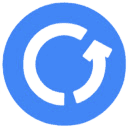In today's information-saturated digital world, content auditing has become a strategic necessity for digital marketers and content strategists. Not only does it map the effectiveness of your existing content, it also provides a framework for optimizing it for better SEO performance and increased user engagement.
A content audit isn't just an inventory review; it's an analytical process that gauges the effectiveness of your digital content. Identifying gaps, highlighting strengths and aligning your content with marketing objectives are essential steps in the pursuit of a proactive and thoughtful digital strategy.
Key steps to an effective content audit
A structured, methodical approach is crucial to the success of a content audit. The following steps, inspired by the book Content Strategy for the Webhave been designed to help you navigate your way through the audit process. They will serve as a guide to assess your current content, identify opportunities for improvement and align your efforts with your company's overall strategic objectives. Embark on this journey with a critical mind and a willingness to adapt, as this is the key to transforming your content into a powerful lever for digital success.
Understanding goals and objectives
The first crucial step in carrying out a content audit is to fully understand the purpose and objectives of your content strategy. This involves a thorough analysis of your business goals, your target audience and the key messages you wish to convey. Ask yourself: what actions do you want your audience to take after interacting with your content? Does your content aim to inform, educate, entertain or convert? A clear understanding of your objectives will enable you to better evaluate the performance of your current content, and identify areas for adjustment or improvement. This alignment between the objectives of your content and those of your company is essential for an effective and coherent content strategy.
Inventory existing content
Creating a comprehensive inventory is the first palpable step towards understanding the true extent of your content. This involves cataloguing every digital element - blog posts, videos, social media posts, infographics, and more.
Use content analysis tools or, failing that, a simple spreadsheet to record key information such as titles, URLs, publication dates, as well as performance metrics such as number of views or engagement rate. This step, though tedious, is crucial. It provides an overview of your content, enabling you to identify both the strengths to build on and the gaps to fill.
What's more, this inventory will serve as the foundation for all subsequent analyses, ensuring that your content audit is as comprehensive and accurate as possible.
Analyze content performance
Once your content inventory has been established, the next step is to evaluate its performance. To this end, tools like Google Analytics can provide valuable data on page traffic, time spent by visitors on each article, and bounce rate.
It's also a good idea to look at performance indicators such as conversion rates or engagement on social networks to measure the impact of your content. In-depth analysis will help you identify which pieces of content resonate most with your audience, and which require optimization or updating to better meet user expectations and align your strategy more closely with your brand's overall objectives.
This analytical approach is crucial to understanding visitor behavior and adjusting your content strategy in an informed and effective way.
Comparative analysis
Benchmarking is where you assess the differences between the current state of your content and where you want it to be to effectively achieve your business and content objectives.
This involves comparing the information gathered during the inventory and performance analysis stage with predefined success standards based on your objectives. Identify under-performing content types, topics not covered that interest your audience, or formats and channels that have not been exploited.
What's more, this exercise often reveals unexpected opportunities to innovate or redefine your strategy. A carefully conducted gap analysis provides you with a clear action plan, highlighting where to focus your updating, creation or optimization efforts to fill these gaps and capitalize on new strategic avenues.
Developing practical recommendations
Having carefully analyzed and identified the gaps between the current state of your content and where it should ideally be positioned, the next step is to develop clear, practical recommendations for improving your content strategy. This may include recommendations for optimizing the SEO of certain articles, updating or restructuring obsolete content, as well as suggestions for exploiting new formats or distribution channels likely to increase audience engagement.
Define specific actions, assign them to team members with clear deadlines, and ensure that each recommendation aligns perfectly with your brand's long-term objectives. Remember that a successful content strategy depends on constant evolution and adaptability to changing consumer behaviors and market trends.
Based on your analysis, draw up an action plan to refine, remove or create content that has a positive impact on your objectives.
SEO strategies to highlight
SEO, or "natural search engine optimization", is a fundamental element in ensuring a website's visibility and relevance in search engine results. It's a discipline that requires constant monitoring, given the ongoing evolution of search algorithms. Adopting cutting-edge SEO strategies not only improves a site's ranking, but also builds authority and trust in your brand.
On-Page Optimization
On-page optimization involves fine-tuning the internal elements of your web pages so that they best meet search engine requirements. This includes updating title tags, creating attractive meta descriptions, using H1 and H2 tags to structure content, and optimizing images with relevant alternative text. It's imperative to ensure adequate keyword density while maintaining quality content aimed first and foremost at users.
Keyword analysis
Having a thorough understanding of the most relevant keywords for your niche is instrumental. It's not just a question of targeting the most sought-after terms, but also of understanding the intentions behind users' queries. Long-tail keywords, which are often less competitive, can be particularly effective in attracting qualified traffic.
Link Building and Backlink Analysis
The development of a solid network of backlinks, i.e. inbound links to your site, is essential for building domain authority. However, rather than quantity, it's the quality of the links that counts. Analyzing your current backlink profile can reveal opportunities to acquire links from high-authority sites relevant to your sector.
Mobile Optimization and Loading Speed
Flawless navigability on mobile devices and fast loading times are crucial for user experience and SEO. Google favors mobile-optimized sites, and slow loading speeds can lead to high bounce rates - hurting your rankings.
Quality Content and User Engagement
At the heart of SEO strategies lies the creation of rich, engaging content for the user. Quality content that answers users' questions, provides useful information and promotes interaction is favored by search engines. What's more, it strengthens visitor loyalty and boosts conversions.
By integrating these strategies into your content audit and the implementation of your SEO strategy, you'll lay the foundations for increased visibility and optimized digital performance.
Recommended tools for content auditing
To carry out a successful content audit, it is imperative to rely on reliable and proven tools. These tools play a crucial role in providing accurate data and automating otherwise tedious and complex processes. Here is a careful selection of essential tools that will refine your audit and propel your content strategy forward.
Google Analytics
Google Analytics is one of the most powerful and indispensable tools for content auditing. Thanks to its comprehensive interface, it enables you to analyze visitor behavior on your site, offering valuable insights into the most visited pages, the time spent on each, bounce rates and user paths.
This wealth of information helps you identify which content really captivates your audience, and which aspects require improvement or updating. Based on real, quantifiable data, you can then make informed decisions to optimize your content strategy, focusing on creating content that engages, informs and converts.
Using Google Analytics also allows you to track the effectiveness of your SEO strategies and fine-tune your approach based on observed results, while identifying new content opportunities to exploit.
AHREFS or SEMrush
AHREFS and SEMrush stand out as two of the most advanced and versatile tools available to SEO and content marketing professionals. These platforms offer a wide range of features, from detailed keyword analysis and backlink evaluation to on-page SEO auditing and competitor position monitoring.
AHREFS stands out for its extremely comprehensive backlink database, enabling users to discover, track and analyze links pointing to their site. This tool is crucial for developing an effective link building strategy and detecting any harmful links.
SEMrush, on the other hand, offers a holistic vision of digital marketing, including functionalities linked to PPC, social networks and even content marketing. Its competitor analysis function allows you to decipher competitors' content and SEO strategies, offering valuable insights for refining your own approach.
Using AHREFS and SEMrush in conjunction or alternately can provide a deep understanding of the SEO and content landscape, helping you to identify opportunities, threats, and monitor the evolution of your content strategy over time. By leveraging the unique strengths of each tool, you can maximize the visibility and effectiveness of your online content.
Surf SEO
Surfer SEO is a revolutionary content optimization tool based on benchmarking and artificial intelligence. It enables content creators and SEO specialists to optimize their web pages by comparing them with the top results in Google for specific keywords.
Surfer SEO's main advantage lies in its ability to provide recommendations based on data such as word count, keyword density, presence of specific terms and title structure, thus contributing to the development of high-performance content.
The tool also analyzes the quality and relevance of backlinks, site structure, and even technical aspects of on-page SEO such as meta tags, offering a 360° view of what's working for the leaders in your niche. By integrating Surfer SEO insights into your content strategy, you can significantly improve the search engine positioning of your pages, while responding more effectively to the needs and questions of your target audience.
Its data-driven approach helps you not only to create content that resonates with your audience, but also to structure it in a way that promotes SEO and online visibility.
Screaming Frog
Screaming Frog is an indispensable SEO analysis tool that stands out for its ability to quickly crawl your website, mimicking the behavior of search engines. By providing a complete audit of your site, this tool helps identify technical issues that could negatively impact your SEO, such as broken links, erroneous redirects, meta tag errors, and duplicate content problems.
Its user-friendly interface makes it easy to visualize and analyze data, enabling SEO specialists and content creators to take precise corrective action to improve overall site performance. Screaming Frog is therefore a major asset for any content strategy aimed at optimizing a website's visibility and accessibility in search results.
By integrating it into your content auditing toolbox, you're putting all the chances on your side to effectively identify and resolve technical problems, and thus boost your organic SEO.
Content Analysis Tool (CAT)
Content inventory tools, and in particular the Content Analysis Tool (CAT), are crucial to the strategic management of website content. They enable an exhaustive audit of a site's entire content, providing a detailed overview that includes content type, distribution, currency and SEO effectiveness.
CAT offers an intuitive dashboard and detailed reports that make it easy to identify obsolete, redundant or under-performing content. This tool helps content specialists make informed decisions about updating, restructuring or eliminating parts of their content, based on accurate data.
In addition, CAT is particularly useful for planning and managing content migration during website redesigns, ensuring that each piece of content is optimized to meet the needs of the target audience and the requirements of search engines. By integrating CAT into your arsenal of content auditing tools, you'll significantly increase the effectiveness and relevance of your digital content strategy.
By harnessing the power of these tools, you can carry out an in-depth, systematic content audit. The insights gained will be the levers you need to significantly improve your online presence and adjust your content strategy in an informed and strategic way.
Draw inspiration from 'Content Strategy for the Web
Diving into Kristina Halvorson and Melissa Rach's landmark book 'Content Strategy for the Web' is like accessing a goldmine of strategic insights. It provides insightful techniques for refining information architecture, and best practices for foolproof content governance. The book emphasizes the importance of a well-defined content strategy, which translates into clear guidelines and an editorial line that resonates with the target audience.
Fundamental principles
The fundamentals of an effective content strategy are based on a thorough understanding of your audience, the alignment of your content with your company's objectives, and the implementation of robust content governance. First, it's crucial to conduct a rigorous audience analysis to identify their needs, preferences and challenges. This understanding enables you to create content that truly resonates with your target audience. Secondly, every piece of content must contribute to the company's overall objectives, whether that's increasing brand awareness, generating leads or building customer loyalty. Finally, effective content governance ensures the consistency, quality and timeliness of content across all platforms. Involving all stakeholders in the creation and maintenance of editorial standards and publication schedules is essential to the long-term success of a content strategy.
Halvorson and Rach stress the need to establish a solid foundation for any content strategy. This starts with an understanding of business objectives, in-depth knowledge of users, and content aligned with these elements. They encourage content audits to map existing content and clearly determine the direction to take.
Content creation and distribution
Creating and distributing content is at the heart of any effective digital strategy. It's all about producing relevant, high-quality information that captivates audience interest while being optimized for search engines. Consistency and regularity in publication are crucial to maintaining audience engagement and improving organic SEO. Halvorson and Rach recommend taking a strategic approach to content planning, ensuring that each published piece serves a specific purpose and fits into a well-defined editorial calendar. Content distribution, meanwhile, is not limited to publication on the entity's own site, but extends to various digital channels, such as social networks, newsletters and content-sharing platforms, enabling audiences to be reached where they are. A multi-channel strategy enriches the user experience and maximizes the chances of conversion, by reaching the audience through different touchpoints.
Measurement & Analysis
Measurement and analysis are crucial components of any effective content strategy. Halvorson and Rach stress the importance of setting measurable objectives and using analytics to track content performance against these objectives. They recommend the use of specific KPIs (Key Performance Indicators) to evaluate content success in terms of engagement, conversion and visibility. This helps identify which content resonates best with your audience and adjust strategies accordingly. In addition, an in-depth analysis of user behavior on your site can reveal optimization opportunities and help understand how content can better meet user needs and expectations. Finally, by integrating a continuous feedback loop, where measurement and analysis feed into content strategy adjustments and improvements, brands can ensure a dynamic and responsive online presence.
Governance and Quality Maintenance
Governance and quality maintenance are essential pillars in ensuring the sustainability and effectiveness of a content strategy. Kristina Halvorson and Melissa Rach stress the importance of establishing clear procedures for content creation, revision and validation. This includes setting strict editorial guidelines, defining quality standards, and establishing a regular feedback cycle with users.
Content governance involves defining precise roles and responsibilities within the organization, ensuring that each team member contributes effectively to the overall strategy. In addition, maintaining content quality requires constant vigilance and adaptability to market developments and user feedback.
Finally, Halvorson and Rach recommend the use of advanced content management tools to facilitate collaboration, change tracking and archiving, thus ensuring impeccable consistency and quality over time.
By integrating these thoughtful 'Content Strategy for the Web' principles into your content auditing approach, you'll position your brand not only to meet current market demands, but also to anticipate future trends and stand out in an ever-changing digital environment.
Well-executed content audits can transform an online strategy into a truly effective engine of organic growth. By continuing to refine and evaluate your content, you'll stay ahead of the curve in an ever-changing digital landscape.
Take the time to conduct your audit thoughtfully and systematically, and you'll position yourself as an authority in your field, offering practical solutions that resonate with depth and relevance to your target audience.







